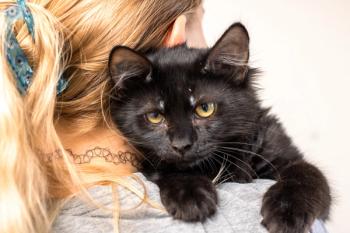
Preventing and managing spay neuter complications (Proceedings)
Surgical complications are always a possibility in spay/neuter surgeries, but certain practices can help minimize problems. Obviously, prevention of complications is the best approach, but early recognition of problems and effective management of problems are the keys to ensuring excellent patient care and successful recovery from surgery.
Surgical complications are always a possibility in spay/neuter surgeries, but certain practices can help minimize problems. Obviously, prevention of complications is the best approach, but early recognition of problems and effective management of problems are the keys to ensuring excellent patient care and successful recovery from surgery. The most common complication are hemorrhage, pain, swelling, and surgical dehiscence. Ovarian remnants while not common are serious and must be addressed.
Hemorrhage
Hemorrhage can occur from many different sources during an ovariohysterectomy. Subcutaneous tissue, rectus abdominis muscle (if you cut muscle fibers), ovarian pedicles, uterine vessels, broad ligament and, unfortunately, from structures that should not even be involved in a spay (spleen, mesentery, bladder). Obviously, prevention of hemorrhage is much better than control of hemorrhage once it has occurred. To avoid inadvertent trauma to abdominal organs while entering the abdomen of the cat, the puppy and the adult dogs (if you do midline approaches in the adult dog) elevate the linea alba, hold the scalpel parallel to the abdominal wall with the sharp edge of the scalpel blade facing up. Plunge the scalpel into the linea and lift up. This approach avoids any downward movement of the scalpel that could inadvertently incise the spleen, intestine, mesentery or urinary bladder. If you do paramedian approaches in adult canine spays, after separating the fibers of the rectus abdominis muscle elevate the peritoneum before cutting with scissors. Again, this technique prevents inadvertent trauma to abdominal organs.
Splenic lacerations caused by too aggressive abdominal entry can be managed by carefully suturing the splenic capsule using 3-0 or 4-0 absorbable sutures with a taper needle in a simple continuous pattern. The splenic wound is then covered with absorbable hemostatic sponge. When suturing the capsule extreme care must be taken to prevent making the splenic laceration worse. The splenic capsule, is easily torn so you must be very careful when placing sutures.
Bladder lacerations caused by aggressive abdominal entry can be managed by suturing the bladder wall with 3-0 absorbable sutures in a simple interrupted or simple continuous pattern.
Mesenteric lacerations that involve mesenteric vessels are managed by ligating the damaged vessel(s) and suturing the tear in the mesentery with 3-0 absorbable suture in a continuous pattern. If you ligate one or more mesenteric vessels you must check the color of the involved intestines prior to abdominal closure to make sure the intestine remains viable. Loss of intestinal viability will necessitate an intestinal resection and anastomosis.
To prevent hemorrhage from the ovarian pedicles in the dog, I recommend a single ligature placed securely. The critical factor here is making sure that the ligature is several millimeters away from any crushing instrument (hemostat or carmalt). Use a three-clamp technique placing the first hemostat (or carmalt) most proximally and only closing it 1 click of the ratchet. Place the second hemostat several millimeters distal to the first allowing enough separation that the ligature will crush the pedicle completely ligating the ovarian vessels. A third hemostat is placed between the ovary and the uterine horn. The single ligature is controversial, but one tight secure ligature is all that is needed. Ligatures can be tied with a square knot, a surgeon's, knot or a Miller's knot depending on the amount of tissue that is to be incorporated into the ligature. Of these, the Miller's knot is the most secure.
Ligation of the uterine body can best be accomplished by a single Miller's knot placed without placing any hemostatic clamps on the tissue.
If an ovarian pedicle tears, retracting back into the abdominal cavity prior to ligation, you must retrieve and ligate the pedicle. Using the "biological retractors" improves your ability to find the bleeding pedicle. If the right ovarian pedicle is bleeding find the descending duodenum and reflect it to the left exposing the caudal pole of the right kidney and the right ovarian pedicle. If the left ovarian pedicle is bleeding find the descending colon, reflect it to the right exposing the caudal pole of the left kidney and the left ovarian pedicle. The safest way to exteriorize a bleeding ovarian pedicle is to reach in with two fingers, grasp the pedicle and exteriorize it. Once the pedicle is exteriorized you can place two hemostats and ligate in the crushed area of the most proximal hemostat. Remember the ureters are just deep to the ovarian pedicles so reaching in and clamping a bleeding ovarian pedicle with a hemostat can cause injury or result in ligation of the ureter.
Prevent hemorrhage from the broad ligament by carefully evaluating the size of any vessels in the broad ligament prior to incising or tearing the broad ligament. Any vessels of substantial size should be ligated prior to cutting / tearing the broad ligament.
Ligation of the spermatic cord in the puppy or the cat is performed using a figure eight knot in the cord. Ligation of the spermatic cord in the adult dog is by use of the Miller's knot. In dogs over 18 kgs I generally place a transfixation ligature just distal to the Miller's knot.
Hemorrhage from a castration is generally due to insecure ligatures. The Miller's knot is an excellent knot for the ligation of the spermatic cord in adult dogs. I recommend the placement of one ligature using a Miller's knot on the spermatic cord of the adult dog if the dog weighs over 18 kgs (40 lbs). In dogs greater than 18 kgs place a ligature with a Miller's knot proximally and a transfixation ligature distally. Hemorrhage from capillary bleeders in the scrotum can best be managed by the placement of a temporary (only a couple hours) scrotal wrap. Failure of ligatures of the spermatic cord can result in significant hemorrhage. If caught early enough it is almost always possible to retrieve the spermatic cord before it retracts into the abdomen. Extending your incision, either scrotal or prescrotal, and digital palpation will almost always reveal the spermatic cord. The cord is then retrieved and religated. It hemorrhage occurs after the cord has retracted into the abdomen diagnosis is much more difficult and correction requires entry in the abdominal cavity for repeat ligation of the cord.
Dehiscence
Perhaps the most devastating complication of an ovariohysterectomy, short of terminal hemorrhage, is an abdominal wound dehiscence. Management of an abdominal dehiscence, if caught in time, involves cleaning the exposed abdominal contents, repairing any damaged tissue, thorough levage of the abdominal cavity, secure closure of the abdominal wall and skin and administration of antibiotics.
Prevention of abdominal dehiscence is a far better option than treatment of such. The critical elements for a secure abdominal closure are apposition of the holding layer, the ventral rectus fascia, and the skin in a manner that maintain blood supply and minimize self-trauma. The mistakes that are most likely to result in dehiscence are insecure knots, suturing body wall on one side of the incision to subcutaneous tissue on the opposite side, and taking bites in the body wall that are too small. To prevent these, make sure that knots are true square or surgeon's knots. When tying apply even tension to both the long and short strands of the suture and avoid any upward tension. Uneven or upward tension can turn easily turn a square knot into a slip-knot. To ensure that you are opposing the linea alba or the rectus fascia you must have good exposure. Undermining slightly on either side of the linea alba (on ventral abdominal midline spays) will give you clear visualization of the holding layers on both sides of the abdominal wall incision. Clean exposure of the rectus fascia (if you do paramedian entries into the abdomen) provides good visualization of the fascia as you close the body wall. Bites in the body wall, or rectus fascia, should be no less than 3 mm on both sides of the incision.
The most common mistake made in abdominal wall closure is placing the abdominal sutures too tightly. There is a real differences between ligating and suturing and sutures tied too tightly, especially sutures that incorporate some of the rectus muscle compromise blood supply to the very tissue you want to heal, create increased pain and increased tendency for self-trauma. With increased self-trauma there is an increased chance of wound dehiscence. Sutures should oppose wound edges without strangulating tissue. A good technique is to place the first throw of the knot with only enough tension to oppose wound edges. The second throw should have the same amount of tension. This creates tissue apposition without compromising blood flow. The next four throws (depending on the suture material) should be pulled tightly creating a secure knot.
Ovarian remnant
An ovarian remnant occurs when ovarian tissue is left in the abdomen after an ovariohysterectomy. To avoid this make sure you have fully exteriorized the ovaries. Cutting the suspensory ligament, proper placement of the incision site, and positioning the animals with the front legs reflected alongside the thoracic wall all assist in getting good exposure of the ovary. When placing hemostats (or carmalts) on the ovarian pedicle have a thumb and index finger on the ovary so you can feel where the ovary ends and avoid clamping the ovary with your surgical instruments.
If an ovarian remnant occurs you must surgically remove it. Performing the surgery while the animal is in heat will make locating the remnant easier. Use of the "biological retractors" for exposure and grasping with fingers are the best methods to expose and exteriorize the ovarian pedicles and find the ovarian remnant. Once the remnant is exteriorized, place two clamps proximal to the remnant, and ligate in the crushed area of the most proximal clamp.
Seromas
A seroma is a collect of serosanguinous fluid generally in a subcutaneous pocket and is the result of excessive tissue trauma, excessive undermining of skin, and/or failure to adequately close dead space. Prevention is a factor of minimizing tissue trauma, minimizing undermining and effectively closing dead spay.
Seromas are self-limiting and may or may not be treated. Drainage with placement of a belly wrap can be used. Or the seroma can simply be left to resolve on its own. The most difficult aspect of management of a seroma may be differentiating it from an abdominal wall dehiscence.
Conclusions
Complications will occur. Obviously, prevention is always better than management. Meticulous tissue handling, secure ligatures, secure body wall closures and minimizing dead space will all help to minimize complications. But when complications occur, don't panic. Just work your way through the complication in a careful and logical approach.
Newsletter
From exam room tips to practice management insights, get trusted veterinary news delivered straight to your inbox—subscribe to dvm360.






